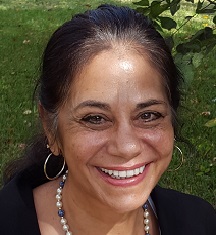 It happens frequently. A kid returns to school or other activities after a two-week absence because of a psychiatric hospital stay. She may have been terrified by her symptoms, or may have attempted suicide, and has many doubts about what her life will look like after the immediate crisis is over. Returning to everyday life can feel like an overwhelming challenge. Statistics show that the risk of relapse is very high.
It happens frequently. A kid returns to school or other activities after a two-week absence because of a psychiatric hospital stay. She may have been terrified by her symptoms, or may have attempted suicide, and has many doubts about what her life will look like after the immediate crisis is over. Returning to everyday life can feel like an overwhelming challenge. Statistics show that the risk of relapse is very high.
She walks into her after-school program, certain that everyone knows about it. Every time someone glances her way, especially while talking with a classmate, she shrinks inside, believing they’re whispering about her, calling her crazy.
But the truth is actually worse. Possibly no one knows, so she has no support, which she badly needs.
According to Education Week, mental health challenges in young people are common, and they create major barriers to learning. But as is true with adults suffering from such problems, the young can and do recover — even those with serious challenges. Educators can provide critical support in their recovery and help them as they work to integrate back into classes and get on with learning and life.
But here’s what often happens now. In one club she’s seated next to one of the people she cited as contributing to her suicide attempt because of cyberbullying. In another activity, she’s seated near students who bullied her more directly. She only feels safe when seated on the periphery, whether there are bullies present or not.
She is supposed to take medication at 4 p.m. but rules prevent her from bringing her medication to school, so she also doesn’t have access in her after-school program. There are a few things that make her feel safer, like holding a special stone. She’s not allowed to have it.
Many improvements are needed, as literature on current practices related to students returning from psychiatric hospitalization shows. But there may be fairly simple and nontime-intensive actions that can greatly improve practices. One such approach, used in Massachusetts, is called Bridge for Resilient Youth in Transition, or BRYT (pronounced bright).
Before returning to school and after-school programs, a circle, much like a restorative justice circle, could be employed. The circle would include the individual, her parents, a staff nurse, the individual’s psychologist or therapist, the counselor and at least one senior program administrator. During the circle the girl finds out exactly what is known and unknown about her psychiatric crisis. This alone can go a long way toward helping her feel safe.
Knowing that probably no one knows anything about her reason for missing two weeks of life can mitigate her sense that “everyone is talking about her.” This knowledge goes a long way toward building an environment where she feels safe enough to attend educational activities and learn while in the beginning stages of recovery from a mental health crisis. Returning can be frightening enough without adding the stress of an unplanned transition back to a regular life setting.
Her strengths can be celebrated in a safe environment, and she can express what she needs to feel safe during activity hours. The others present in the circle express their support and let her know what they can do and not do to assist her re-entry. Before talking about particulars, the individuals in the group may take turns sharing their current feelings, fears and hopes. A sense of unity and shared responsibility among the parents, the school and the girl can be built.
The parents and program administrators discuss recommendations that were provided by the outside mental health providers. A simple form can be created to get consent for the program to receive appropriate medical recommendations from the external mental health team. The girl’s medication requirements are discussed, and a method to ensure that she has access to them is identified and committed to. The group evaluates whether a Section 504 plan is needed or if one already exists, whether a modification is appropriate.
During the circle, a safety plan is created. Here the group identifies safe people or places. They discuss any techniques or strategies that can be used to assist the individual. The individual may describe her outward symptoms when she is anxious, depressed or irritable and may need extra support. She may freely express the situations and people around whom she feels most vulnerable. She may also express which specific teachers, program staff, people or situations she finds supportive. The group discusses together specifically how to support her, and the girl assists the group in modifying these suggestions.
What is standard is that a child returns to life activities full time upon discharge from a mental health facility. Such a rapid transition is sometimes desirable and healthy. Some youth are ready, and are afraid of the consequences of missing more school and other program activities. But others may need a more flexible transition, such as a shortened day or a more gradual return to school and other activities.
I hope this encourages educational programs to develop compassionate and humanistic ways to encourage the very vulnerable population of kids who have mental health challenges, especially after a crisis.
Kamala Joy is a program manager for family and youth at Via Hope in Austin, Texas, a nonprofit providing training and certification to peer specialists and family partners. She has 20-plus years’ experience in multiagency collaboration and coordination on a wide variety of topics.






























